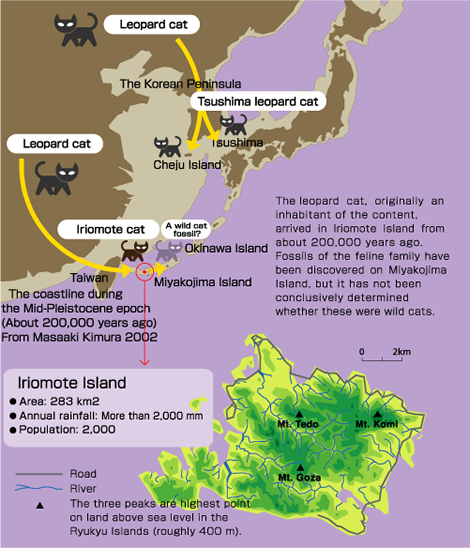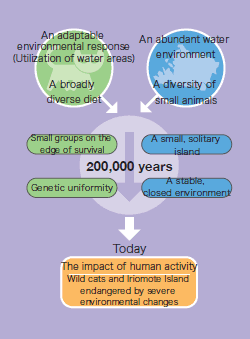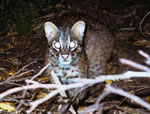I collected samples of Iriomote cat dung and studied its diet from the undigested food. As a result of this study, I found that without picky eating, their diet consisted of a wide range of animal classifications, including such mammals as the fruit bat and the black rat (non-native species); such birds as the rail; reptiles and amphibians, such as lizards and frogs; and arthropods, such as the cricket and the crab. It was particularly interesting that it ate frogs, which ordinary cats are believed not to eat.
When I traced its activities, I found that in contrast to its designation as a wild cat, the Iriomote cat often appeared in low-lying coastal areas or areas next to wetlands. It showed no hesitation about swimming in rivers. This ability to utilize an abundant water environment that incorporates mangrove forests, swamps, and grassy plains is the primary reason it has been able to survive on a small island without rats.
The number of animals living here in the 200,000 years since the wild cat crossed over to Iriomote Island in this isolated environment is estimated to be a few hundred at the most. The genetic diversity of the Iriomote cat is remarkably low, but that is the result of the survival of individuals adapted to the bountiful and stable Iriomote environment. On the other hand, the current destruction of this bounty holds the danger that the Iriomote cats could quickly disappear. It is just a small change from several hundred to one hundred, but it sounds the alarm for the island’s ecosystem.
|




